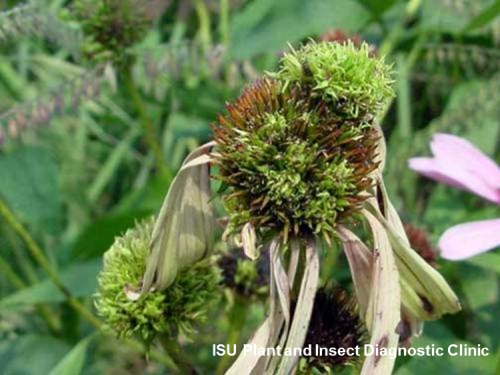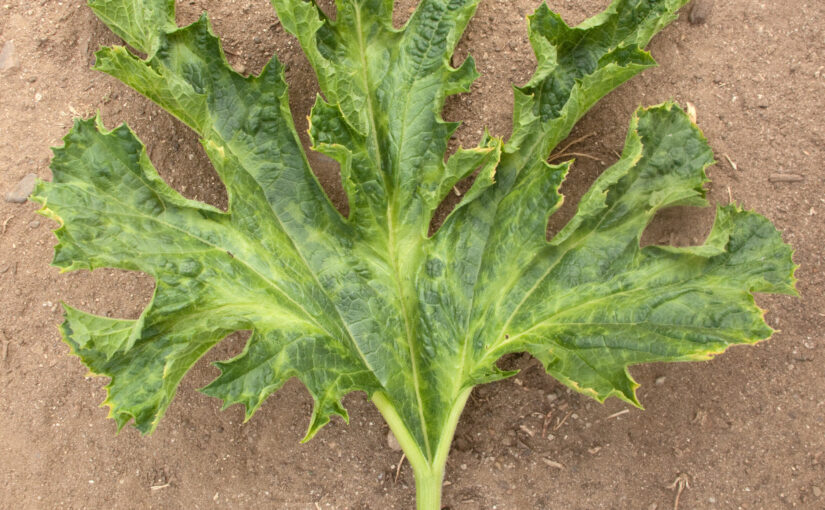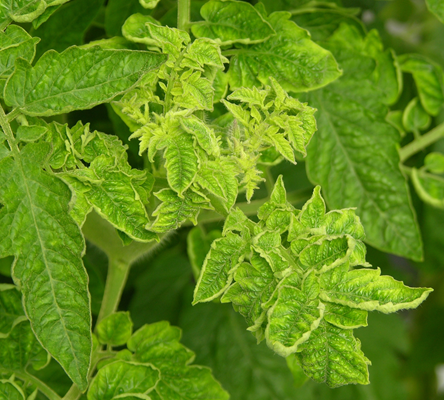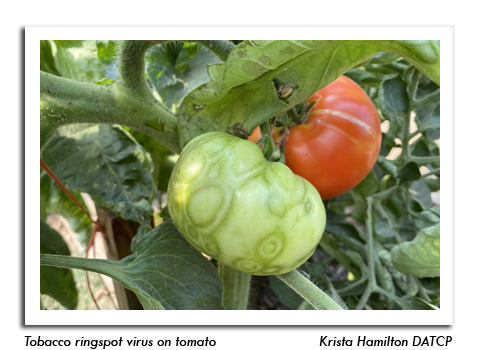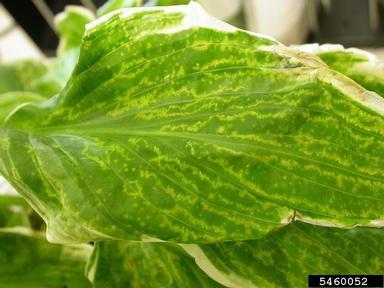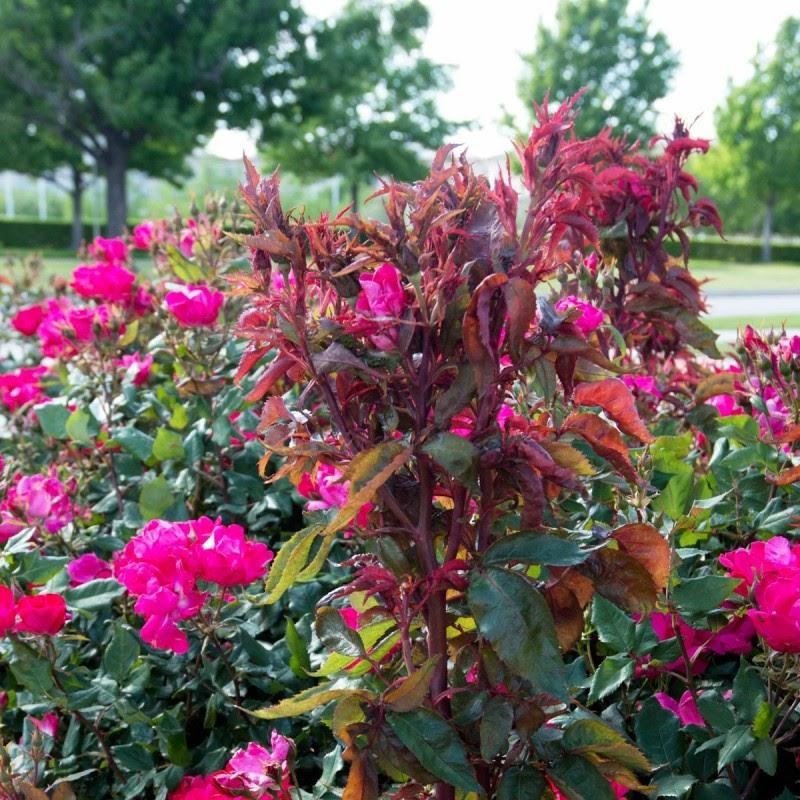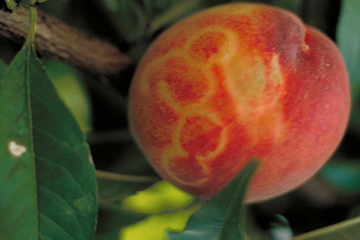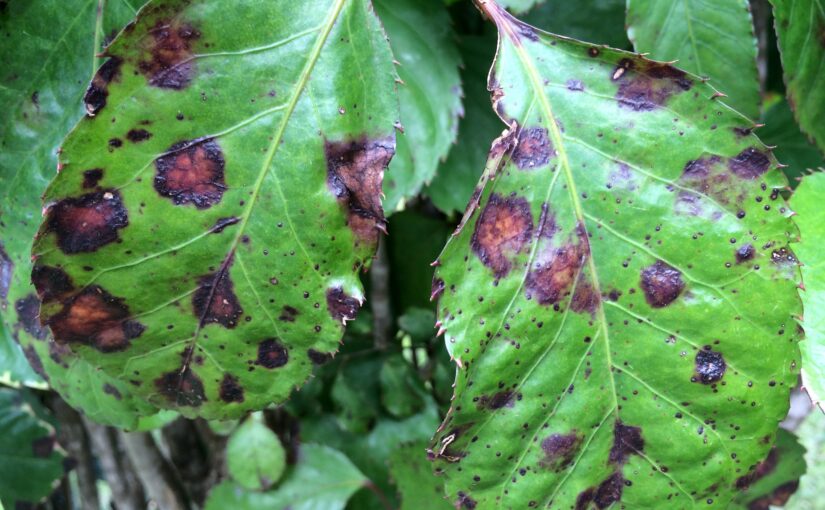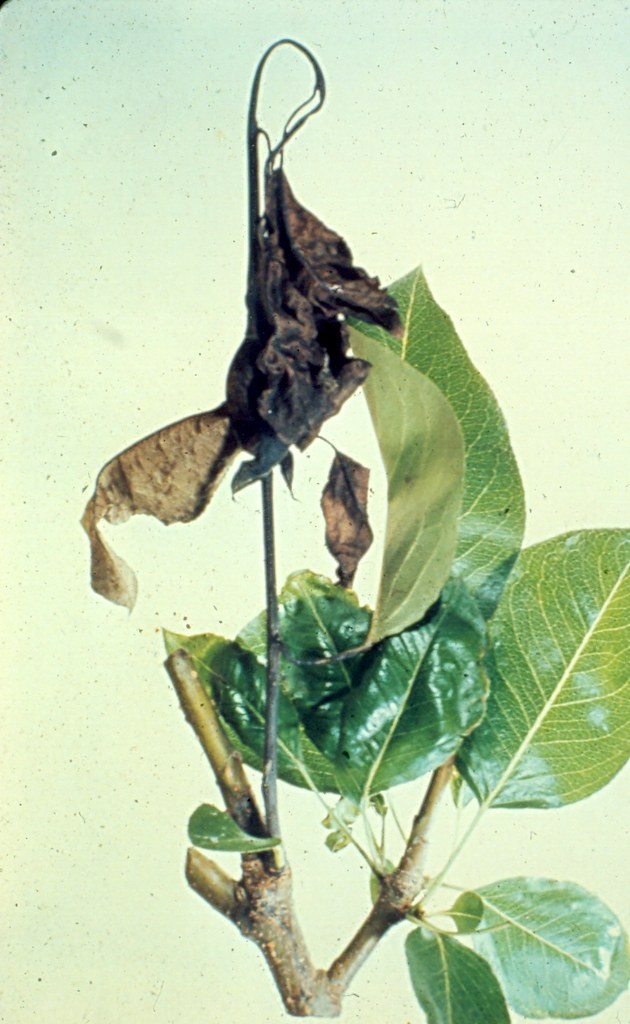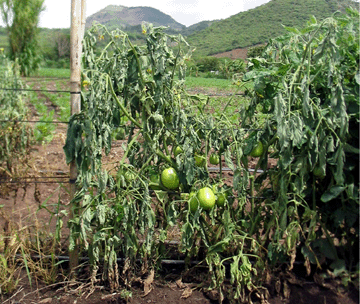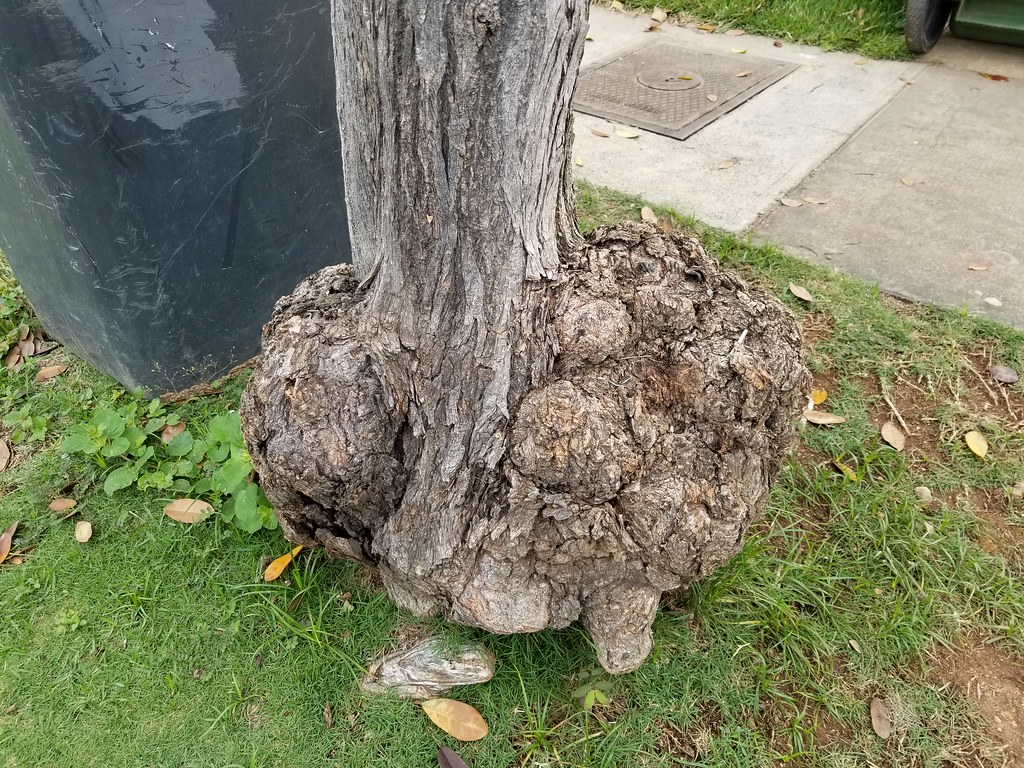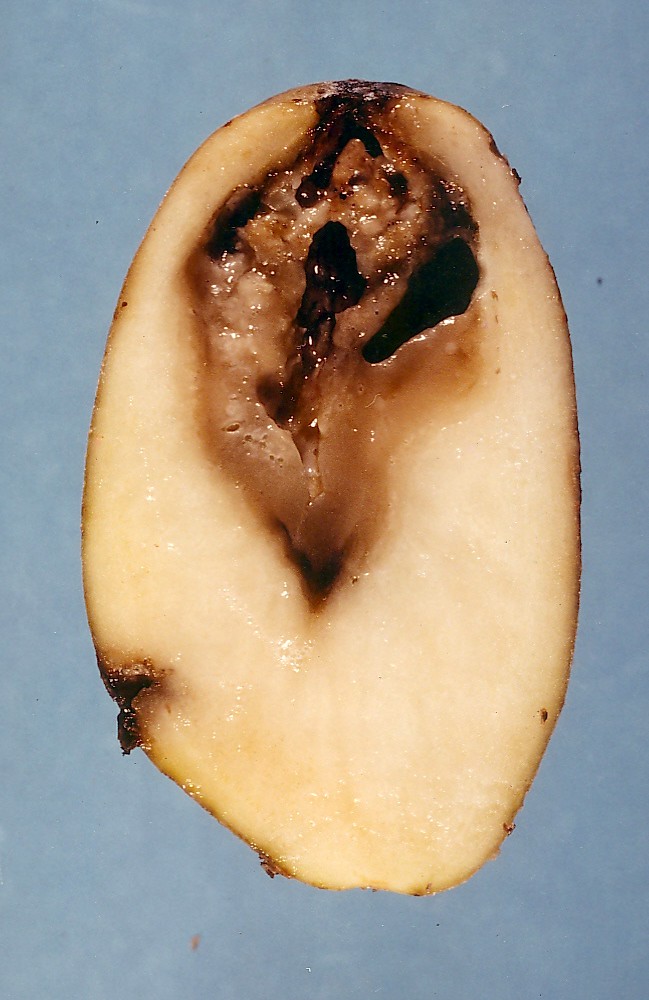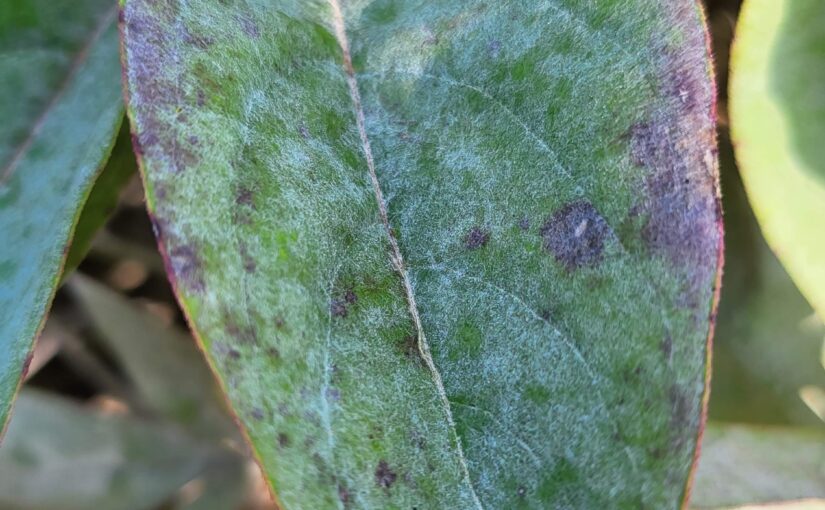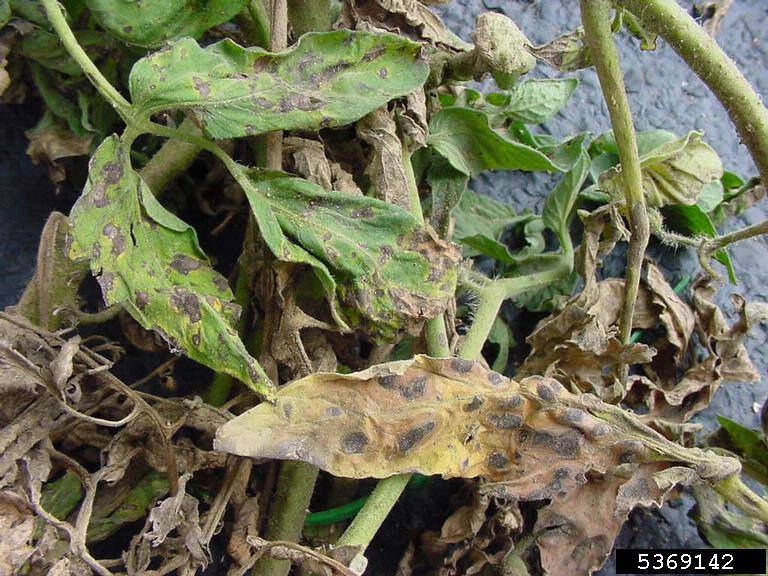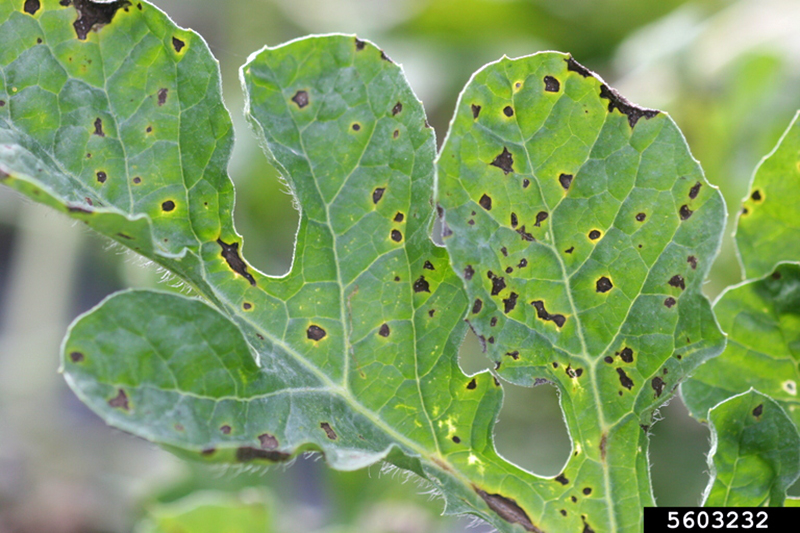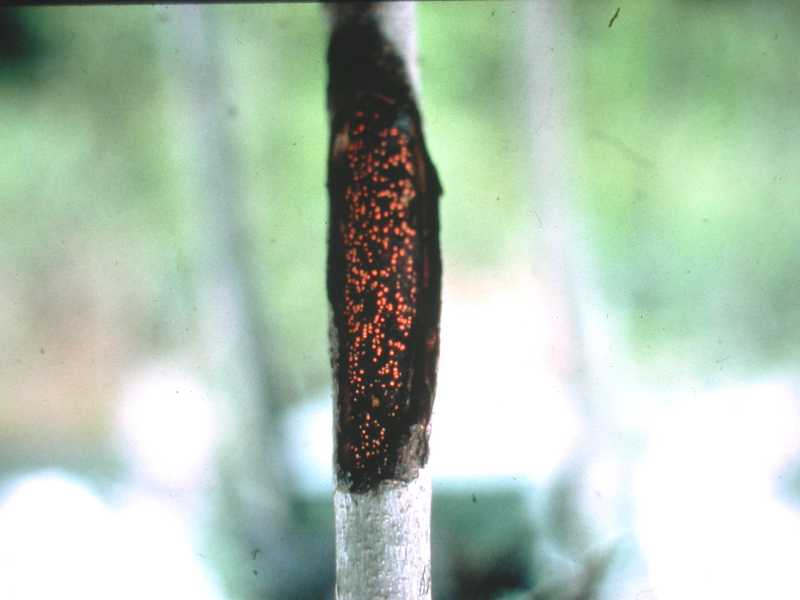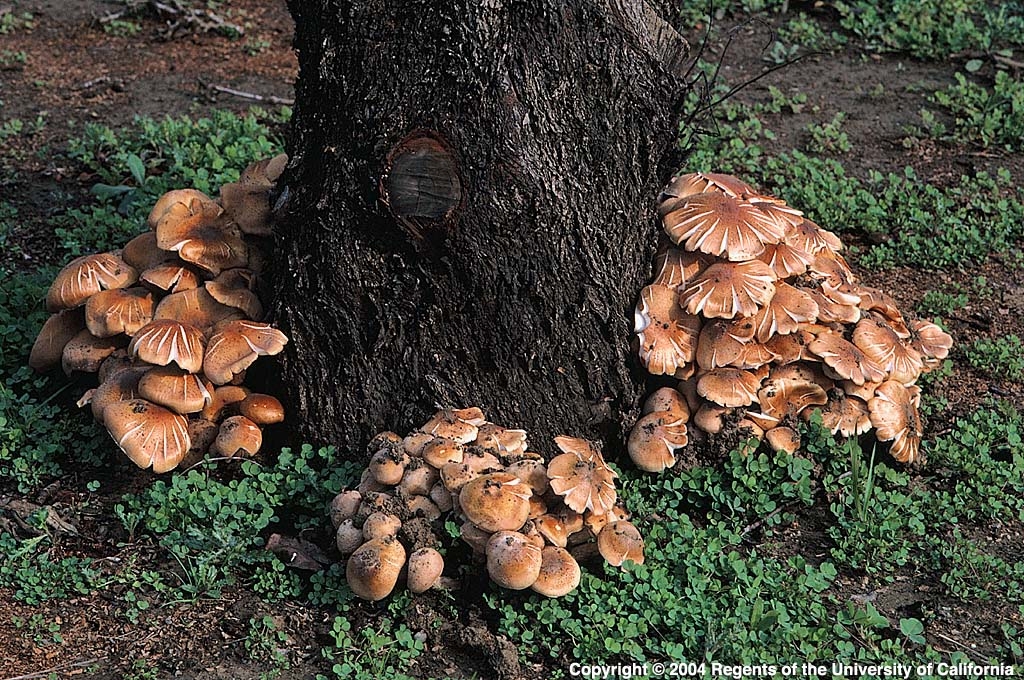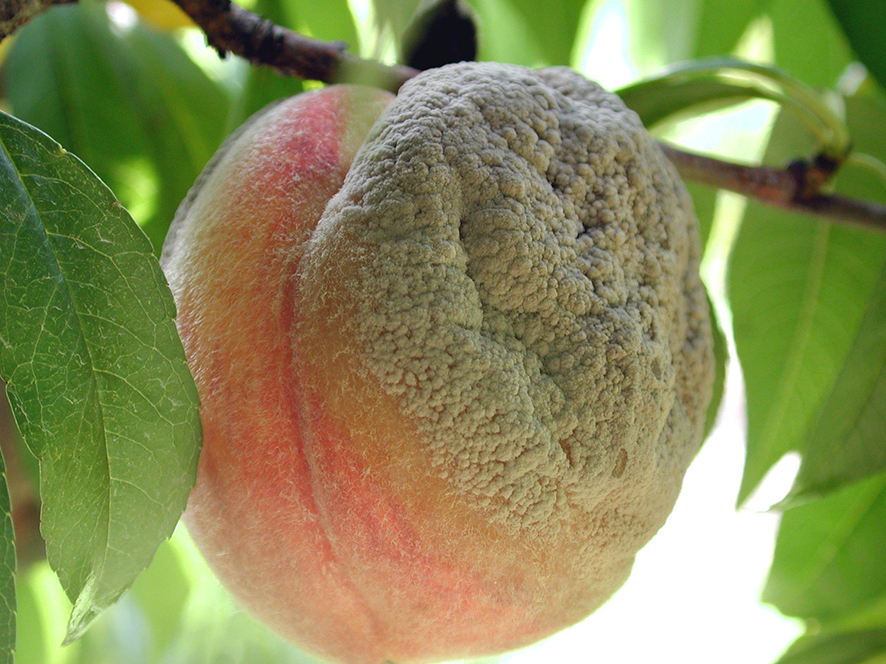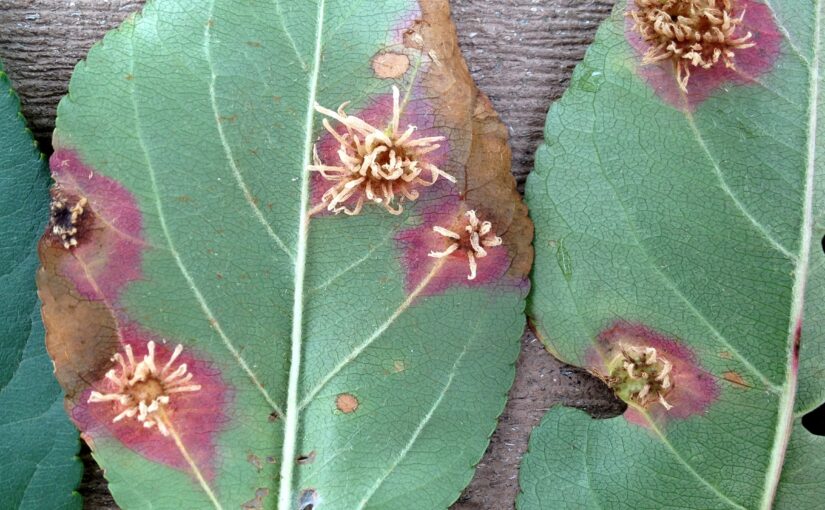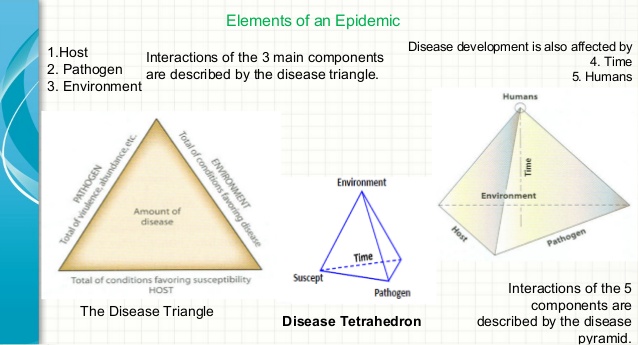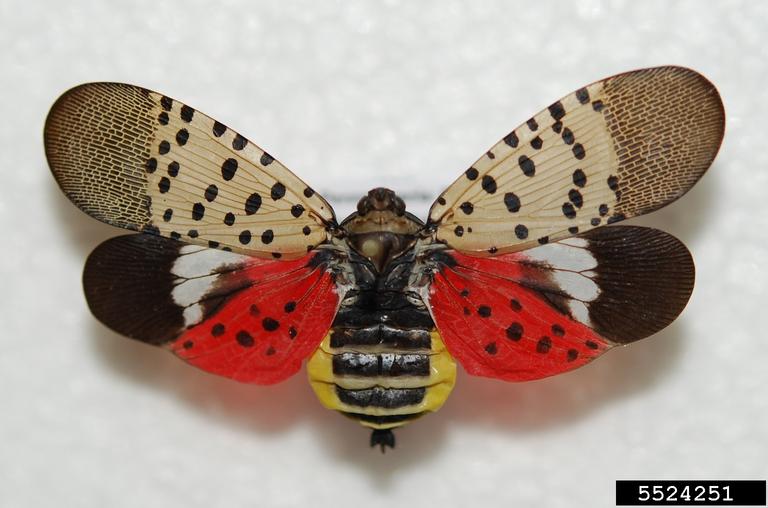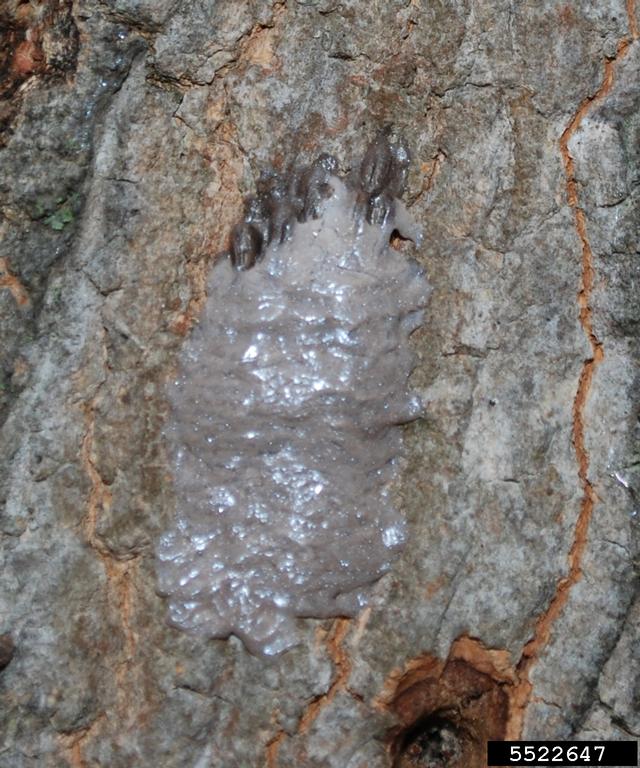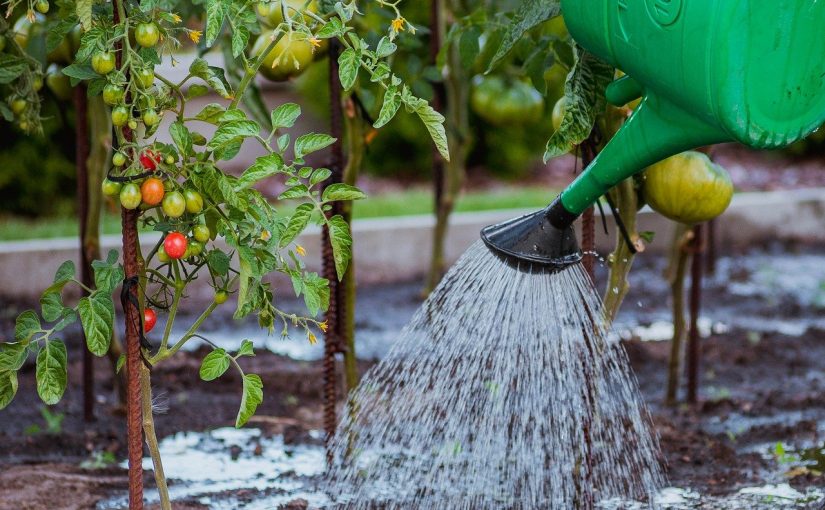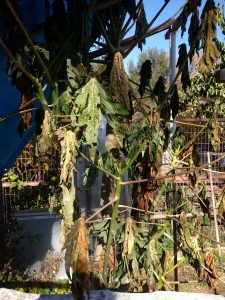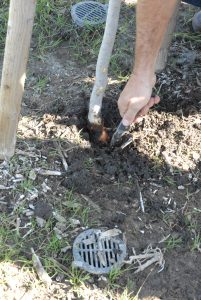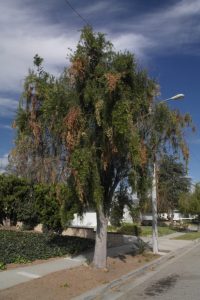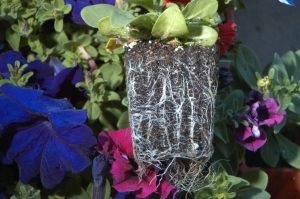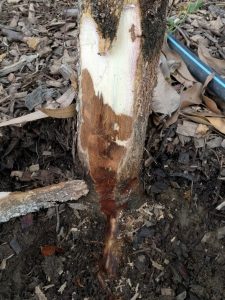Over the last several months, I’ve covered plant disease basics and discussed plant diseases caused by fungi, bacteria, and viruses. In this fifth and final installment, I’m going to talk about diseases caused by anything but those three different agents. There are a few diseases caused by pathogens that fall outside of those well-known classifications. This list is by no means exhaustive, but it is a good start to show you just what is out there. Where applicable, I’ll be discussing signs and symptoms of the disease, potential control or prevention efforts, and dive a little deeper into describing the actual causal agent.
First and foremost, some of the diseases I’m sharing might have already been covered in one of my previous installments. The reason for this is that for simplicity’s sake we often lump diseases caused by these “different” pathogens in with a causal agent that they’re similar or related to or evolved from. It makes describing these things simpler to the general public. But in this chapter, it is my hope to describe and explore just how these things are different as a lesson in how marvelous, interesting, and varied the world is around us.
Phantom Phytoplasmas
Phytoplasmas are single-celled organisms often lumped in with bacteria, seeing as they are actually descended from bacteria. However, phytoplasmas have lost the cell wall that gives bacteria their shape. Phytoplasmas can therefore change shape in response to their environment and to fit in their surroundings better than bacteria which retain shapes like spherical (cocci), rod (bacilli), and spiral (spirilla).
Since they don’t have the protection of a cell wall, phytoplasmas cannot live outside of a host organism and are considered obligate symbiotes. In the case of a plant parasite, it is either the phloem cells of a plant or the gut of an insect vector. Bacteria, on the other hand, are free-living and can exist in the environment and can move between hosts without the aid of a vector insect.
The best known phytoplasma plant diseases are the yellows, with Aster Yellows being the best known. Yellows diseases get their names because plants or plant parts often turn yellow. They become stunted and can develop mis-formed or misshapen parts. Witches brooming, where many twigs, branches, or flowers develop from one point (which can look like a broom) is common. In aster yellows, misshapen and discolored flowers are common. It affects over 300 species, but coneflower, asters, zinnia, and marigolds are common sufferers. In Ash Yellows, ash trees develop unusual leaf growths and witches’ brooms throughout the tree.
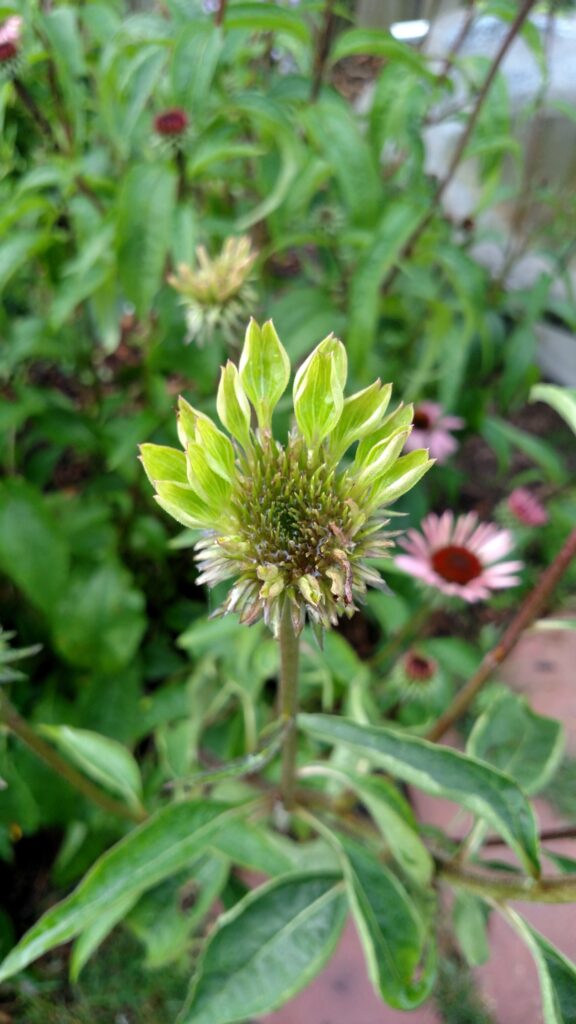
Phytoplasmas require an insect vector, and in the case of yellows, like Aster Yellows, the culprit is a tiny leaf hopper. For Ash Yellows, spittlebugs may also be carriers in addition to leaf hoppers. Since there isn’t a treatment, infection by yellows phytoplasmas can be permanently effective or fatal. The stunting and yellowing will eventually cause a decline in tree health. For herbaceous perennials suffering from Aster Yellows there is no way to revert back to normal blooms. The only way to reduce the likelihood of spread to other plants is removal of whole plants and it can often be too-little-too-late as leafhoppers spread quickly from plant to plant and infection in other plants often occurs prior to noticeable symptoms in nearby origin plants.
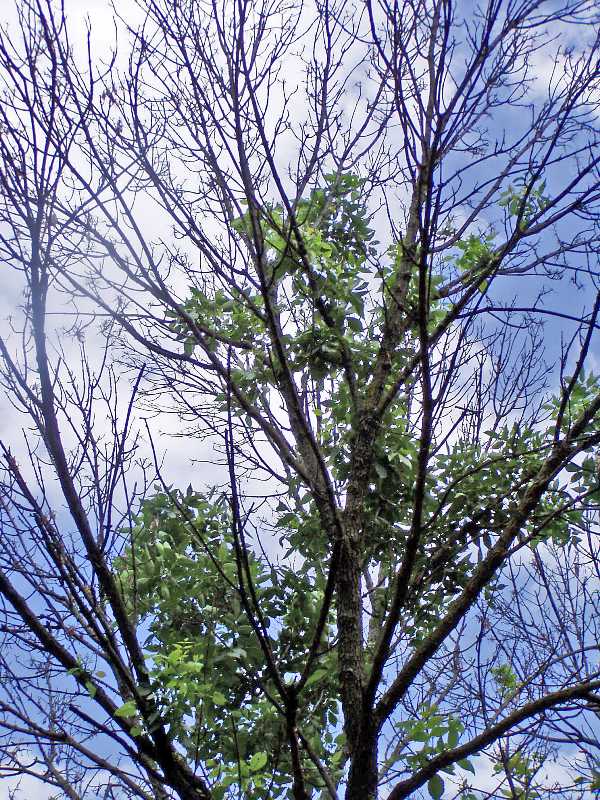
Vicious Viroids
In part 4 of this series, we discussed plant viruses and how devastating they are to plants. Viroids are also very destructive disease-causing agents and, like viruses, cannot be cured. Viroids are non-living agents, just like viruses, and are even simpler. Where viruses are genetic material (DNA or RNA) surrounded by a protein coat, viroids are just simple strands of pathogenic RNA without a coat. These circular, single-stranded RNA molecules do not encode any proteins and rely on the host cells for replication.
Viroid symptoms include stunting, misshapen growth, leaf abnormalities, and reduced yield. It is possible for some plants to be asymptomatic while being infected and providing a source of viroids to infect other nearby plants.
Viroids can spread to plants in similar ways to viruses, through transmission on dirty tools, propagation from infected plant materials, on seeds, through touch. There is some evidence that viroids can spread through insect vectors like aphids, which is not common for viral diseases. Prevention relies on good sanitation like cleaning tools, planting disease-free and certified cuttings and seeds, and quarantine of new plants that could be infected.
Common viroid diseases include:
Potato Spindle Tuber Disease (PSTVd)
Common Symptoms: stunted growth, deformed potato tubers, yield reduction

Chrysanthemum Stunt Viroid (CSVd)
Common Symptoms: stunting, spotted leaves, poor rooting, flower color change, disruption of photoperiod response for flower initiation. It is one of the biggest threats to the chrysanthemum production industry.
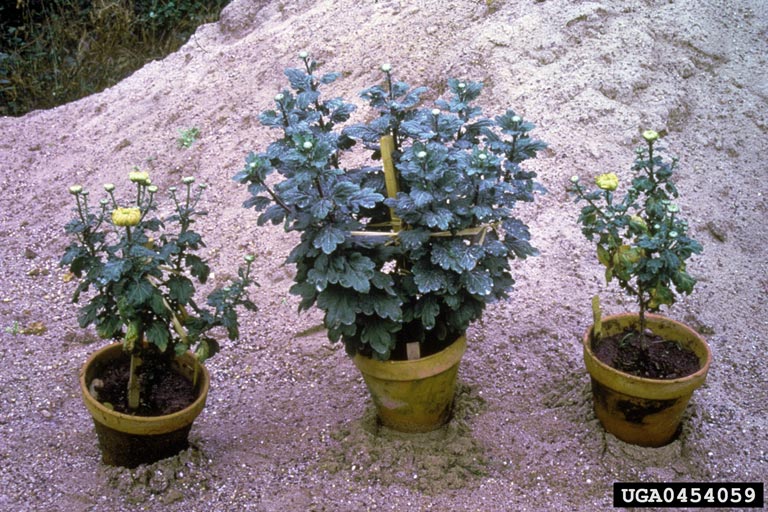
Oafish Oomycetes
While many still lump oomycetes in with fungi, many scientists consider them to be a distinct group because they have a number of differences. One common name for this group is “water mold” because of their preference for wet environments and their mold-like appearance. While they do absorb nutrients and produce mycelia like fungi, there are differences in their composition, genetics, and reproduction. The biggest difference is the production of oospores, which are thick-walled reproductive spores that can rest, or hibernate, for extended periods of time in unfavorable conditions and “germinate” when conditions are favorable for the organism to grow and reproduce. Another difference is the composition of its cell walls. Fungi cell walls are composed of chitin, which is the same chemical that gives hardness to the exoskeleton of insects. Oomycete cell walls are composed of cellulose and beta glucans (polysaccharides that make soluble fibers).
While late blight of potatoes Phytophthora infestans is often called a fungus (and I discussed it in the fungus installment), it is technically an oomycete. The same with downy mildews of various species (Plasmopara) and blights caused by Pythium spp.. One of the more devastating oomycete diseases is Sudden Oak Death Phytophthora ramorum, which as it sounds, is responsible for the sudden death of plants. But many are now calling it Ramorum blight because it effects way more plants than just oak (Rhododendron, Viburnum, Camellia, Azalea, blueberries, Douglas fir, lilacs, and mountain laurel to name a few). Early symptoms of Sudden Oak Death include foliage dieback, leaf discoloration and water-soaked lesions, shoot and twig dieback. As the disease progresses, trees develop cankers that ooze or bleed dark colored sap and eventually decline and die. There is no treatment or cure for sudden oak death and prevention relies on good sanitation and abiding by quarantine regulations.
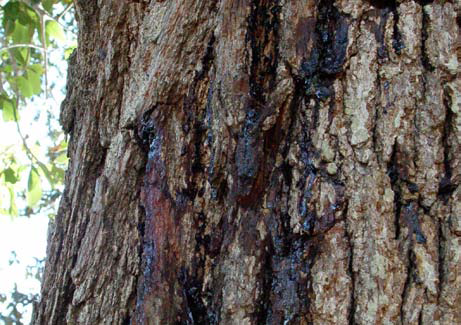

Wrapping it up
Just like diseases caused by the familiar fungi, bacteria, and viruses, these plant diseases can be devastating and difficult to prevent or manage. As always, an ounce of prevention is worth a pound of cure (which is really true when there isn’t a cure). The best way to deal with these diseases, as with any disease, it to practice integrated pest management with good sanitation, procuring plants from trusted sources, and being vigilant for signs of disease so that infected plants can be removed quickly to reduce the chance of spread.
Knowing some of the common diseases and their signs and symptoms is key in early detection and decision making. Hopefully, some of the info I’ve shared in this series can help you keep an eye out for diseases. As always, when in doubt contact your local extension office for help with diagnosis, verification, and to discuss possible treatment or prevention options.
Sources
- https://www.apsnet.org/edcenter/disandpath/oomycete/introduction/Pages/Oomycetes.aspx
- https://www.apsnet.org/edcenter/apsnetfeatures/Pages/Viroids.aspx
- https://www.ncbi.nlm.nih.gov/pmc/articles/PMC6315827/
